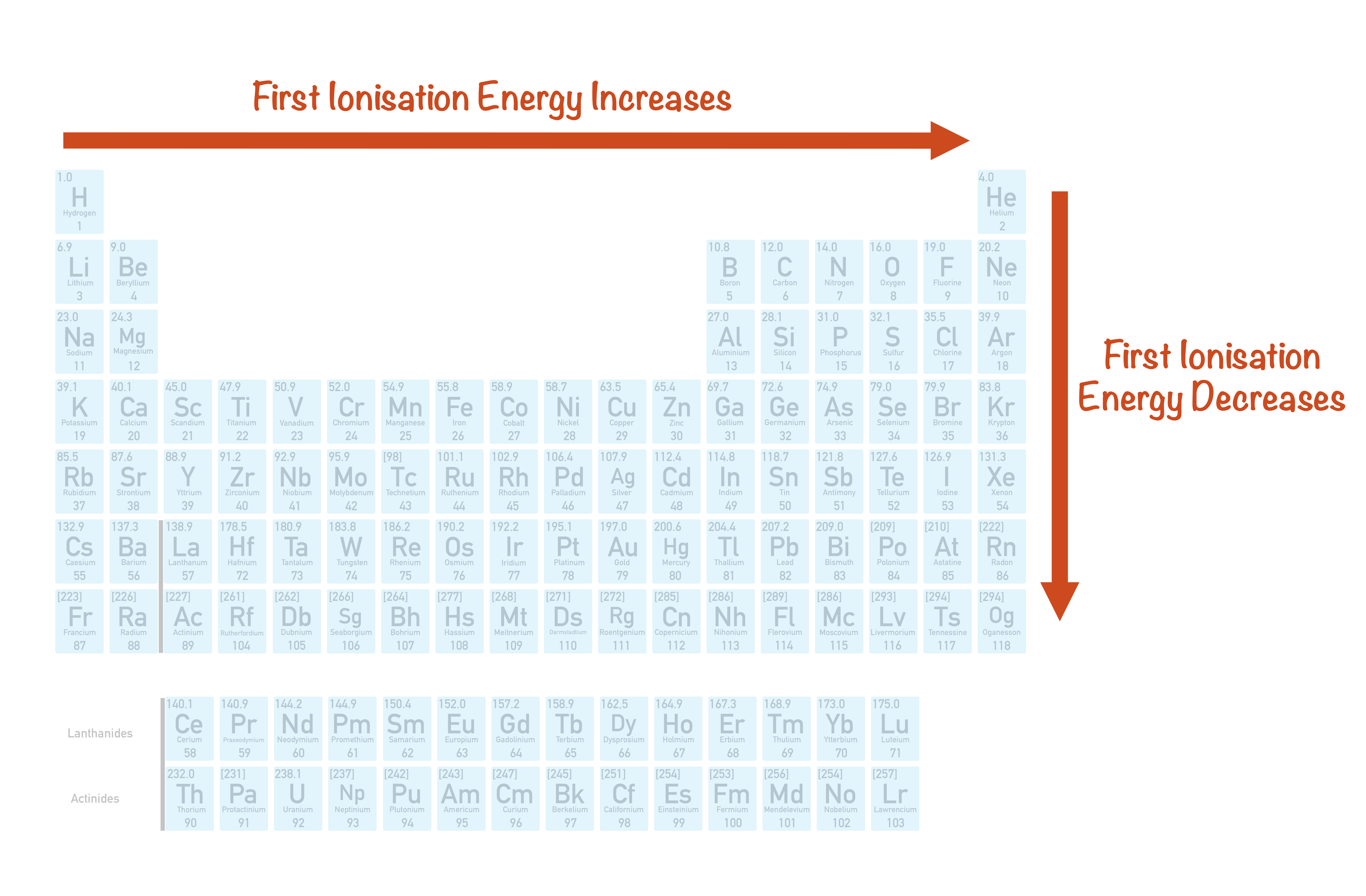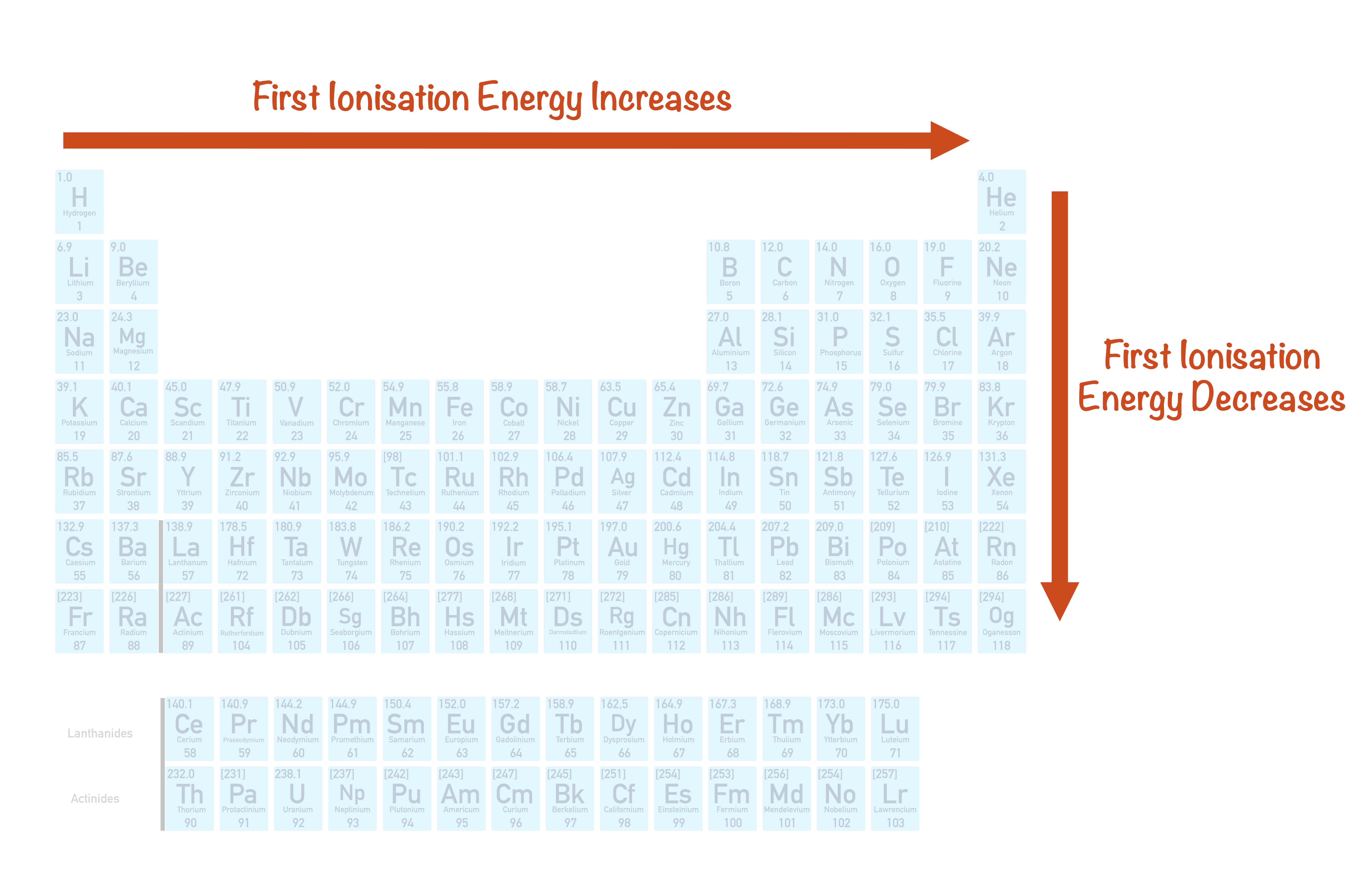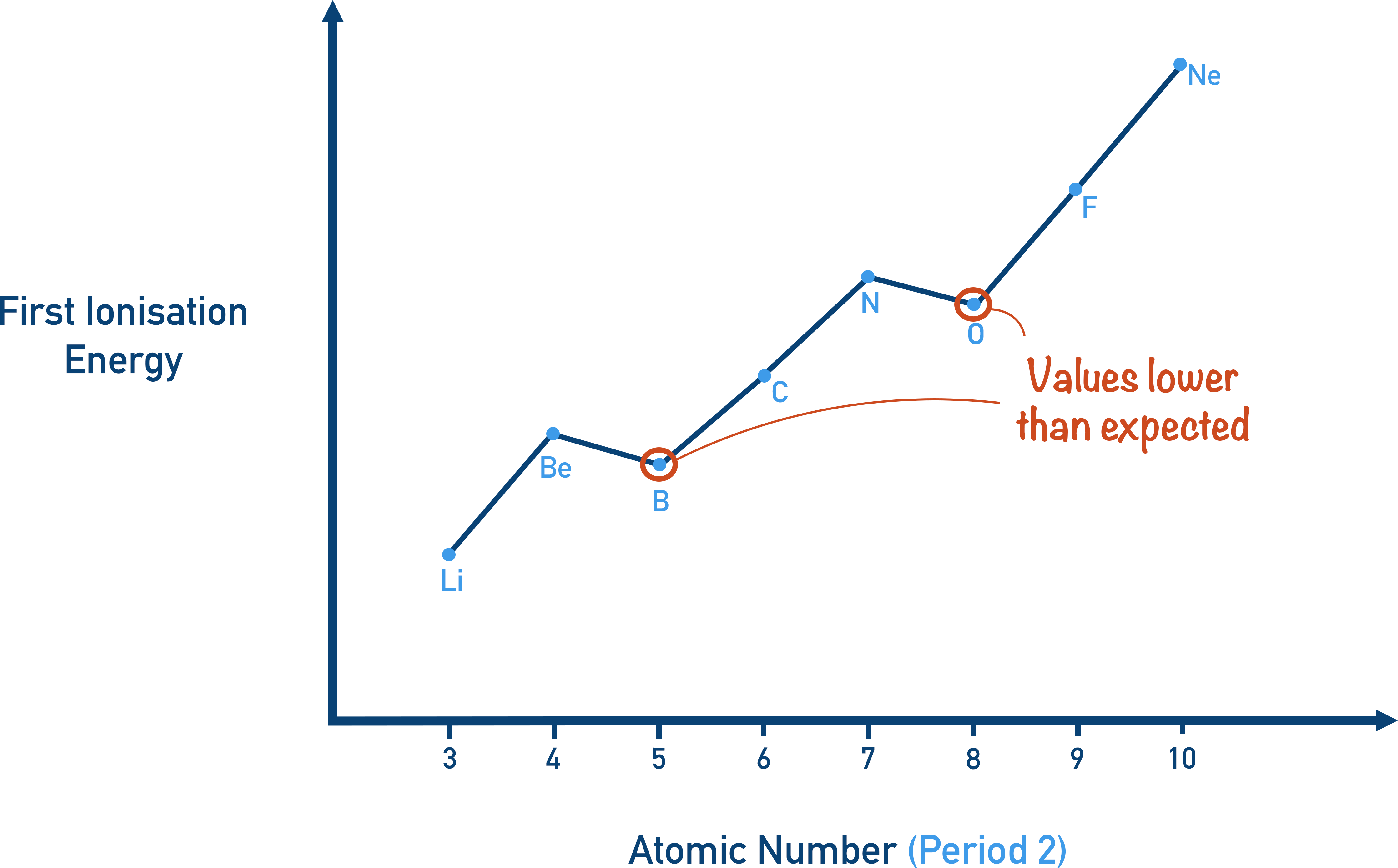Video Tutorial First Ionisation Energy
Quick Notes First Ionisation Energy
- The first ionisation energy of an element is the energy required to remove one mole’s worth of electrons from one mole's worth of its gaseous atoms.
- As a trend, first ionisation energy increases across a period in the periodic table.
- As a trend, first ionisation energy decreases down a group in the periodic table.

- Elements in groups 3 and 6 of the same period do not follow the general trend for first ionisation energy.
- It’s easier to remove an electron from group 3 elements compared to group 2 elements because the electron is being removed from an orbital that is further from the nucleus (p orbital instead of s orbital), meaning the electron is less tightly held by the atom.
- It’s easier to remove an electron from group 6 elements compared to group 5 elements because the electron being removed experiences a higher level of electron-repulsion from other p-orbital electrons.
Full Notes First Ionisation Energy
The first ionisation energy of an element concerns the amount of energy required to remove an outermost electron from an atom. It’s not realistically possible to measure the exact energy required to remove one electron from one atom. Instead, the total energy required to remove one mole’s worth of electrons from one mole’s worth of atoms is measured. The atoms must be in a gaseous state to ensure there is no interaction between atoms – this could alter the energies of outer electrons and change the ionisation energy.

Across a Period
As you go across a period, first ionisation energy increases.
Moving across a period, the atomic number of the elements increases, meaning they have more protons and electrons. An increase in the number of protons results in a nucleus having a greater positive charge. Added electrons go into the same electron shell, meaning the electrostatic attraction between the nucleus and the outermost electrons increases. As the attraction is greater, the electrons are held more tightly to the nucleus, so it is harder to remove them.
This is a general trend, for information on the exceptions to this trend, please see below.
Down a Group
As you go down a group, first ionisation energy decreases.
Moving down the group, the number of electron shells increases. This means that the outermost electrons have more inner shells between them and the nucleus. These extra inner shells effectively weaken the positive charge from the nucleus that reaches the outermost electrons; this is called inner electron shielding. The inner electrons experience a greater positive charge than the outer electrons, so the outer electrons are not held as tightly to the nucleus – it is easier to remove them.
Exceptions!

The general trend across a period does have a couple of exceptions.
Beryllium electron configuration = 1s22s2
Boron electron configuration = 1s22s22p1
Removing an electron from beryllium requires removing an electron from a 2s orbital, whereas removing an electron from boron requires removing the single electron in its 2p orbital.
The 2s orbital is closer to the nucleus than the 2p orbital, meaning the electrons in it experience a greater attraction and are held more ‘tightly’ by the nucleus, making them harder to remove. The 2p electron in boron is further from the nucleus, so it experiences less attraction and less energy is needed to remove it – giving boron a lower first ionisation energy than beryllium.
There is a constant balance here between the distance the electron is from the nucleus and the size of nuclear charge attracting the electron. For boron to carbon, the first ionisation energy increases again as, although the electron being removed is still a 2p electron it’s now experiencing a greater nuclear charge, so it’s pulled in tighter – making it harder to remove.
Oxygen has a lower first ionisation energy than nitrogen.
Nitrogen electron configuration = 1s22s22p3
Oxygen electron configuration = 1s22s22p4
Electrons have a negative charge and repel each other. There are three p-orbitals (each orbital can hold two electrons), so when all the p-orbitals are half-filled, the electrons within repel equally and arrange themselves as far away from one another as possible. This gives a partially stable configuration, making it harder to remove an electron (as for nitrogen).
If we add another electron though, the electrons cannot be equally as far away from one another. This leads to increased electron repulsion and results in a higher energy configuration – an electron experiencing this extra repulsion is now easier to remove, meaning the first ionisation energy decreases (as for oxygen).
However, as with the previous exception, the nuclear charge increases from oxygen to flourine, the extra positive charge is enough to ‘over-ride’ the repulsion from other electrons in the 2p subshell; the greater attractive force becomes the dominant factor, meaning the first ionisation energy increases.
We’ve launched our new site! 🎉
Course-specific notes with built-in search!
AP • A-Level (AQA • CIE • Edexcel • OCR) • IB • NCERT 11 + 12
over 750+ new pages and 3,500 images.
Visit the new homepage
